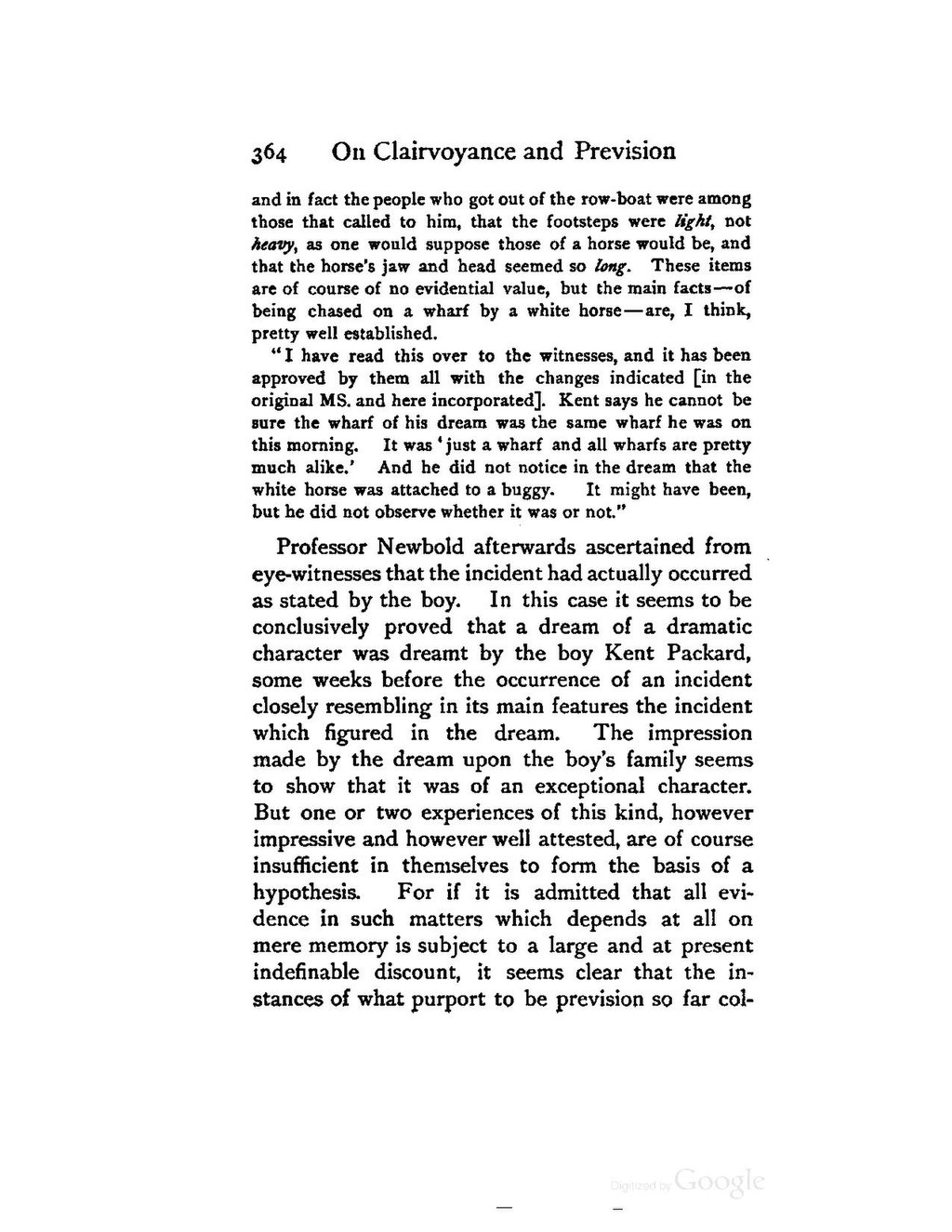and in fact the people who got out of the row-boat were among those that called to him, that the footsteps were light, not heavy, as one would suppose those of a horse would be, and that the horse's jaw and head seemed so long. These items are of course of no evidential value, but the main facts—of being chased on a wharf by a white horse—are, I think, pretty well established.
"I have read this over to the witnesses, and it has been approved by them all with the changes indicated [in the original MS. and here incorporated]. Kent says he cannot be sure the wharf of his dream was the same wharf he was on this morning. It was 'just a wharf and all wharfs are pretty much alike.' And he did not notice in the dream that the white horse was attached to a buggy. It might have been, but he did not observe whether it was or not."
Professor Newbold afterwards ascertained from eye-witnesses that the incident had actually occurred as stated by the boy. In this case it seems to be conclusively proved that a dream of a dramatic character was dreamt by the boy Kent Packard, some weeks before the occurrence of an incident closely resembling in its main features the incident which figured in the dream. The impression made by the dream upon the boy's family seems to show that it was of an exceptional character. But one or two experiences of this kind, however impressive and however well attested, are of course insufficient in themselves to form the basis of a hypothesis. For if it is admitted that all evidence in such matters which depends at all on mere memory is subject to a large and at present indefinable discount, it seems clear that the instances of what purport to be prevision so far col-
